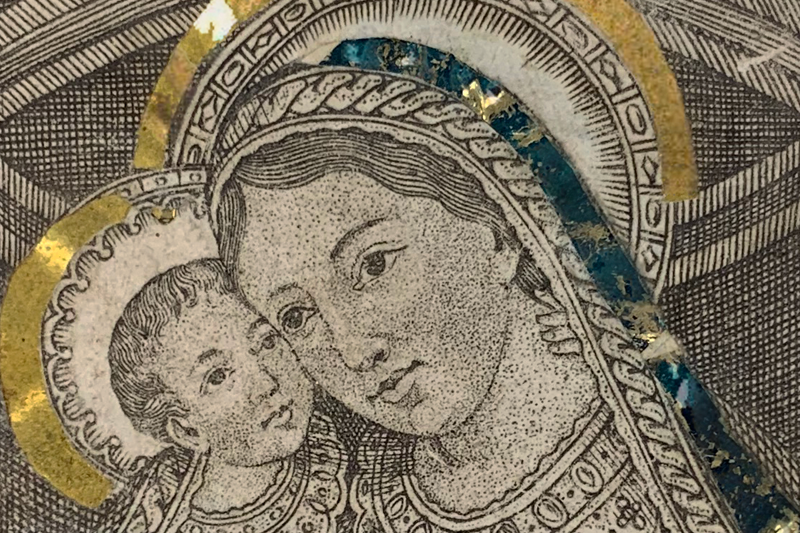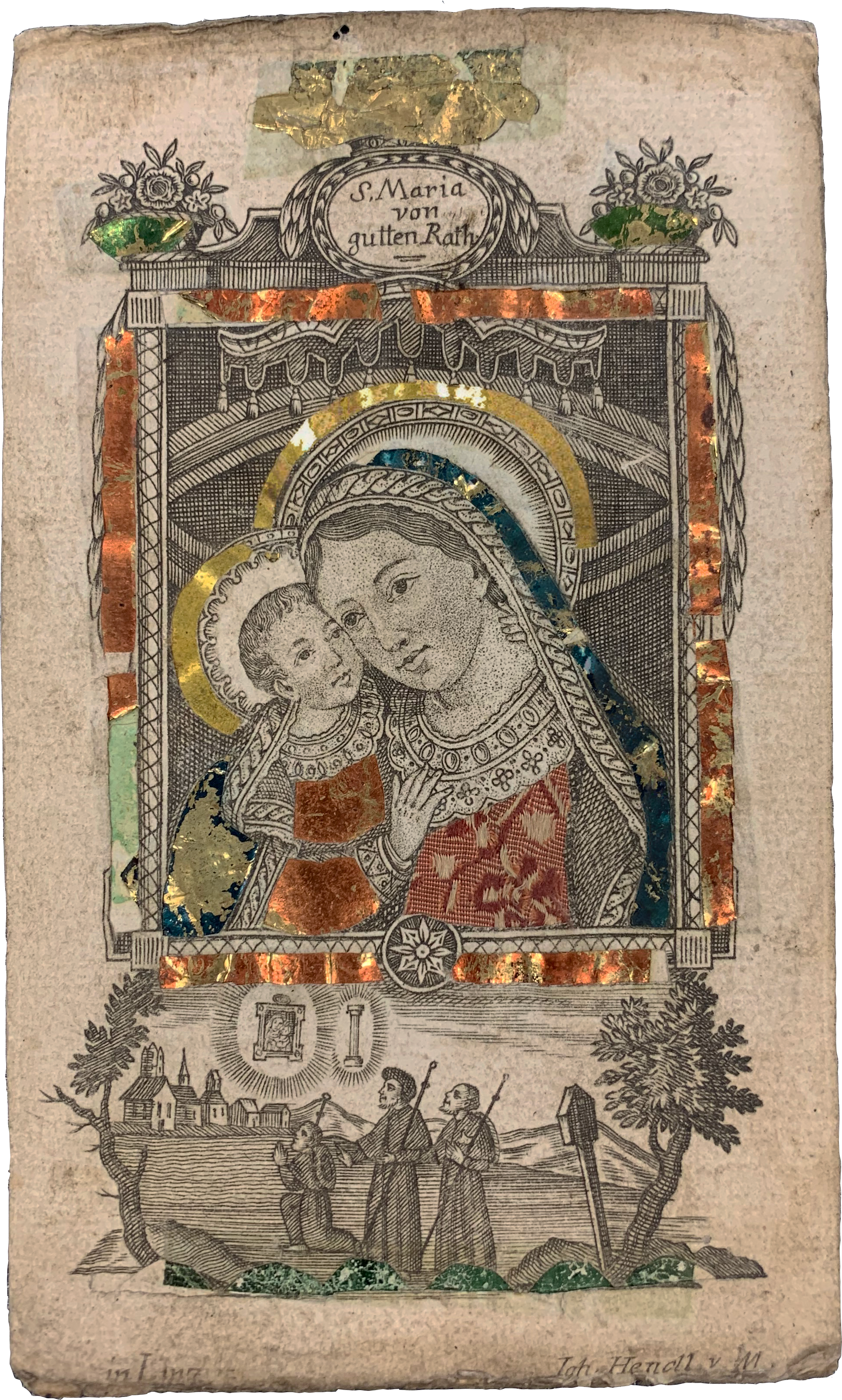Blogs

‘Golden’ Holy Cards
By Eve Wolynes
In the mid-18th century, a new fashion of modifying pictures rose to popularity in central Europe. Called Stoffklebebilder (“cloth-glued pictures”), Spickelbilder (“spike-pictures”) or Spitzenbilder (“lace pictures”), it typically involved cutting out components of a black and white printed image and gluing cloth to its back, giving a pop of color and texture, then sometimes using a penknife to cut decorative patterns into the border around the image to resemble a lace trim. A holy card in the Marian Library’s collection provides a wonderful example of this trend.
The practice was most commonly a humble enhancement done at home, but a few printers and publishers took the practice a step further, using golden and colored foil to make the images literally shine. The foil modifications seem to have been a “conspicuous consumption” version of the cloth style to make the images seem more valuable and extravagant, especially as the Stoffklebebilder style of cards flourished. Johann Hendl, who signed the holy card that is the subject of this blog, was one such printer/publisher, mostly active in Linz, Germany; others included Caspar Harrer, F.X. Jungwirth and G.W. Weissenhahn in Munich and George Frehling and Johann Gutwein in Augsburg, Germany.
Metal foils: Trend didn’t take
The technique of applying metal foils to paper was invented in 1698 by Abraham Mieser in Augsburg, but it never really caught on in popularity outside of Germanic and central European countries. In this holy card, Hendl used that technique to apply foils in a spectacular array of colors: rich blue for Mary’s mantle; vibrant red for the infant Jesus’ dress and the picture frame; verdant green for bushes and plant pots; and of course glittering gold for the halos. Adding further texture to the image, he underlaid Mary’s dress with a snippet of cloth.
Image’s origin: inconclusive
We know less, unfortunately, about the image itself than about the gold foil and cloth delicately glued to it. Its title, “S[aint] Maria von gutten Rath” (“St. Mary of Good Counsel”), suggests that despite its German origins, it was dedicated to Our Lady of Good Counsel, a painting of the Virgin Mary said to have miraculously appeared during a 1467 reconstruction of a church in Genazzano, Italy; the painting subsequently became associated with healings and miracles, which in turn made the church a popular pilgrimage site.
Why might a German printer produce a card dedicated to a holy site in Italy? One possible answer may lie in the connection between Hendl and Our Lady of Good Counsel through the Augustinian order of Maria Eich in Munich. Maria Eich was a pilgrimage site where two brothers had placed a Loreto portrait of Mary into the hollow of an oak tree around 1710-12. A day laborer healed after seeing the image, and it became a popular pilgrimage site in the second half of the 18th century, when Hendl was most active. The church in Genazzano is also held by an Augustinian monastery, and devotions to Our Lady of Good Counsel were subsequently added to the Litany of Loreto. The Augustinian monks in Munich may have found a connection of their pilgrimage site to the pilgrimage to Genazzano. It’s possibly a coincidence, but the buildings illustrated on the card look uncannily like Maria Eich’s monastery). In 1956, under Cardinal Michael von Faulhaber, the Augustinian order at Maria Eich founded a church dedicated to “Mary of Good Counsel,” so the order seems to have been conscious of a connection between their order and the Genazzano church’s Our Lady of Good Counsel.
We cannot be certain of this tentative connection; as with many items in archives and special collections, we don’t have this holy card’s full history. By using scant details apparent on an object and seeking out further historical documentation, we do our best to make informed interpretations. Ultimately, this golden holy card invites more questions than it answers — but it also sparked a handful of interesting discoveries.

Stoffklebebilder Holy Card, "S. Maria von gutten Roth," [late 18th cent.]. Engraver/Publisher: Johann Hendle. From the Marian Library Holy Cards Collection.
— Eve Wolynes is a library assistant in the Marian Library.
